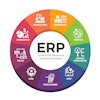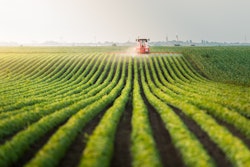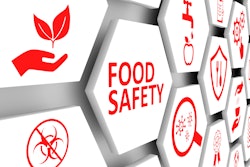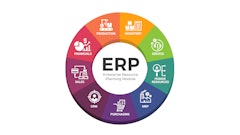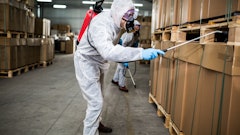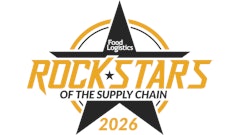
Food manufacturers face mounting pressure to ensure product safety while maintaining efficient operations. Currently in the United States, the U.S. Food and Drug Administration (FDA) lists over 400 open food recalls dating back to 2018. The Food Safety and Modernization Act (FSMA) has established stringent requirements for prevention-focused controls, traceability, and swift recall management. In this environment, traditional quality inspection methods that rely heavily on human inspectors are proving inadequate for meeting regulatory demands and consumer expectations.
AI-driven vision inspection systems are emerging as a critical technology for food processors seeking to enhance compliance while improving operational efficiency. These systems can identify critical defects that human inspectors might miss, such as improperly sealed packaging or foreign material contamination.
Beyond simple pass/fail: Intelligent anomaly detection
Traditional machine vision systems face several limitations in food processing environments. Simple pass/fail judgments do not provide the granularity needed for effective quality control, and rigid rule-based programming struggles to adapt to production variations or packaging changes. These industrial machine vision systems face challenges that can impact their performance and reliability, and the more complex the inspection requirement, the greater likelihood of anomalies being missed, which, where food safety is involved, is seeing incumbent technology fast becoming “modus non-grata.”
With the introduction of AI-driven systems, operators are empowered to identify issues quickly, reducing off-spec materials. The latest generation of AI vision inspection platforms analyzes product images to identify and classify defects that would be noticed upon careful inspection, including flaws not explicitly programmed to be detected.
Cloud intelligence with edge performance
What distinguishes advanced AI vision systems is their architecture. Modern solutions use a hybrid approach where model training and management occur in the cloud, while deployment and actual inspection happens at the edge — on the production floor. This structure provides the reliability and performance necessary for manufacturing while enabling continuous improvement through cloud-based analytics.
 Rockwell Automation
Rockwell Automation
The technology is particularly valuable for food manufacturers who must verify critical safety elements such as sealed packaging, proper labeling, and the absence of foreign objects. AI vision systems can detect anomalies that vary in location, shape, and size adaptability that is essential in food production environments.
Traceability and recall management
One of FSMA's most challenging requirements is enhanced traceability. To control traceability, AI vision systems provide detailed classification and documentation of detected anomalies, creating a comprehensive data trail that is vital during audits or recalls. When integrated with manufacturing execution systems, these platforms enable manufacturers to trace production issues to specific batches, equipment, or time periods. This granularity helps minimize the scope of potential recalls, potentially saving millions of dollars in recall costs and damage to brand reputation.
Looking at real-world implementation of AI vision inspection systems, a dairy manufacturer implementing an inspection system for yogurt packaging revolutionized their quality control process. The AI vision system verified proper lid placement and date and lot code legibility with no impact online speed, while adapting to various packaging designs with no additional configuration.
No-code implementation
A key advantage of modern AI vision systems is their no-code deployment. No programming or prior knowledge of AI or computer vision is required. This makes advanced capabilities accessible to quality teams and frontline operators with no technical background. These platforms offer a fully no-code workflow from camera setup to model training and deployment. Users can easily access the insights needed to achieve performance goals enabling faster resolution of production issues and broader adoption across teams.
By democratizing AI, manufacturers can empower more employees to solve problems, reduce reliance on specialized data scientists, and accelerate value across the organization.
Integrating with existing control systems
Unlike traditional rule-based vision systems which rely on fixed logic and scripting, modern AI vision platforms adapt to variability and complexity in real world production environments. A key differentiator of advanced AI systems is the ability to seamlessly integrate with existing automation infrastructure while offering far greater flexibility and intelligence.
The implementation of AI vision systems typically follows four iterative steps: capture (setting up cameras and initial image collection), label (defining areas of interest and identifying anomalies), train (creating machine learning models based on labeled images), and deploy (moving trained models to edge devices on the production line). AI systems continually improve, making them far more resilient to variation than rigid rule-based alternatives.
For food manufacturers with established automation infrastructure, integration capabilities are crucial to rapid project deployment. AI platforms support cloud and edge connectivity:
· Cloud integration enables advanced data analytics and control of traceability via APIs.
· Edge integration allows real-time decision making using standard protocols such automatic trigger of rejects from a production line when an anomaly is detected by the AI model.
Unlike rule-based systems that require constant manual reprogramming, AI vision adapts to change, reduces false positives, and scales more effectively. Integration isn’t just a feature; it’s a fundamental advantage that transforms vision systems from static tools into intelligent connected assets.
Cloud-powered analytics and enterprise-grade security
Advanced AI vision systems offer far more than real-time defect detection; they unlock powerful cloud analytics that drive continuous improvement across operations. Unlike legacy or isolated inspection tools, modern AI platforms enable manufacturers to identify trends, benchmark performance across lines and facilities, and proactively address quality issues through automated reporting and real-time alerts.
These insights are easily integrated with business intelligence platforms and manufacturing execution systems (MES), helping teams align quality data with strategic initiatives and continuous improvement programs. This system wide visibility and intelligence distinguish AI-driven solutions from traditional rule-based or offline inspection systems.
Equally critical and often overlooked is data security. In industries like food manufacturing, where data sensitivity and regulatory compliance are paramount, not all systems are created equal. Leading AI vision platforms differentiate themselves through multi layered, enterprise grade security, including:
· End-to-end encryption for data in transit and at rest
· Automated vulnerability scanning and patching to reduce risk exposure
· Role-based access controls to manage permissions securely
· Network segmentation for isolating critical infrastructure
· Customer data segregation to ensure privacy and compliance
· Cloud hosting in certified, secure environments
Many platforms are also built to meet stringent compliance standards such as SOC 2 Type II, proving assurance that sensitive operational data is protected by rigorous audited security practices.
By combining actionable analytics with robust cyber security, cloud-based AI vision systems differentiate themselves as strategic assets not just inspection tools, designed for scalable, secure and intelligent manufacturing.
The future of food safety inspection: Differentiated by AI vision
As food safety regulations grow more complex, AI-powered vision inspection systems are rapidly becoming a critical differentiator in compliance strategies. Unlike traditional rule-based systems that rely on static logic and limited adaptability, AI vision systems offer dynamic learning, operational intelligence, and unmatched flexibility.
Manufacturers adopting AI vision not only meets regulatory requirements more efficiently, but also gains continuous insight into quality performance, turning compliance into a competitive advantage. These systems are already reshaping production environments, and future developments will drive even greater value through deeper integration with factory automation and digital infrastructure. Key advantages include:
· Enhanced vision accuracy powered by larger image datasets and advanced AI models
· Greater flexibility in adapting to product variations, packaging formats and SKU changes
· Predictive analytics that enable proactive quality management, not just reactive detection
· Built-in traceability integration for full end-to-end visibility across the supply chain
· Decreasing implementation costs as AI platforms mature and become more scalable
By leveraging cloud computing with centralized analytics, and model management combined with edge computing for real-time online inspection, AI systems deliver speed and intelligence. This hybrid architecture enables manufacturers to meet strict food safety standards while achieving operational agility and providing data-driven decision making.
The impact goes well beyond food and beverage. Consumer goods, medical devices, electronics, and automotive all benefit from the same core differentiators:
· No-code Interface, empowering non-technical users
· Ability to detect anomalies without programming, far beyond the capabilities of rule-based systems
As industry pressures mount around quality, cost control, and compliance, AI-powered vision inspection systems stand out as a transformative tool—one that not only solves today's challenges, but also lays the foundation for a smarter, more resilient and future ready manufacturing ecosystem.


